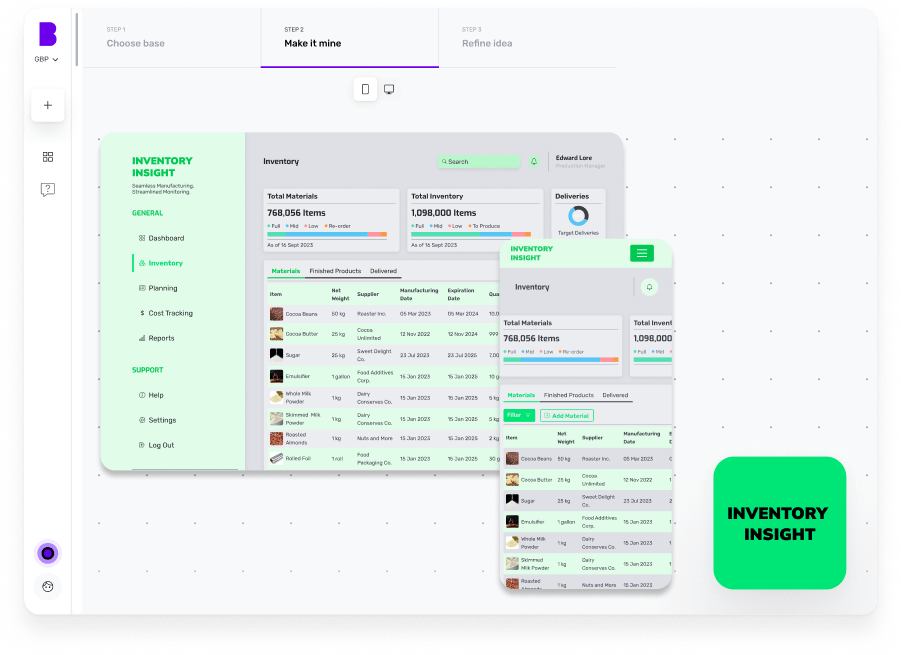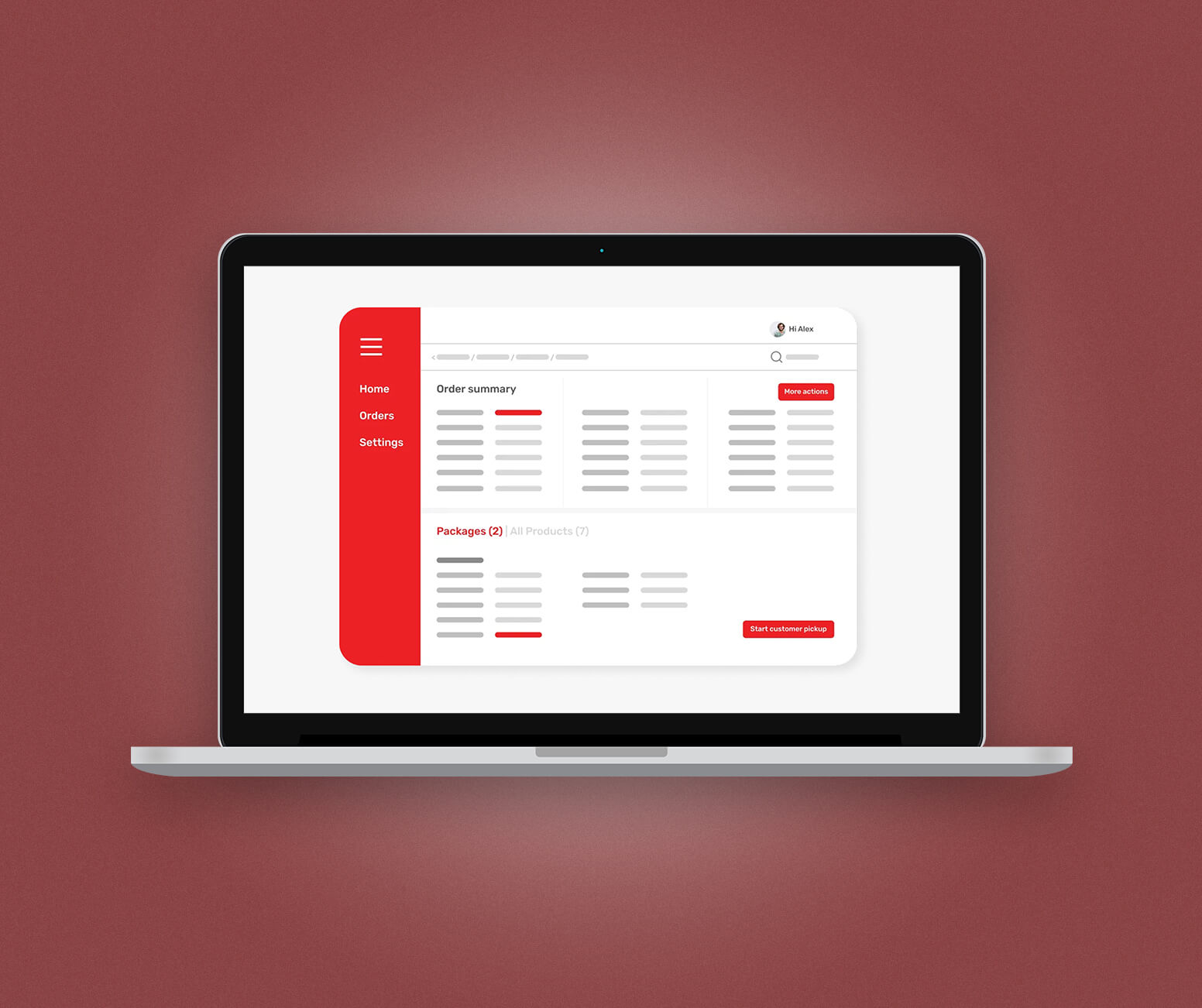Key highlights 2️⃣ Off-the-shelf is great for quick wins, but custom software is built around your operations, providing you with a strategic edge. 3️⃣ If you opt for a custom route, success comes down to who builds it. A great developer brings your idea to life in a smarter, faster way, even if you’ve never built software before. |
Your sales team is juggling multiple spreadsheets. Customer support is bouncing between tabs. Operations? They’re being held together with digital duct tape. You know all this is fixable with software, but what kind?
Every business, no matter the size, eventually faces the classic conundrum:
Should you invest in custom-built software tailored to your exact needs or choose a quicker-to-deploy, ready-made, off-the-shelf solution?
It’s not just a technical decision – it’s a strategic one.
While off-the-shelf software can get you up and running fast, custom solutions offer the flexibility to grow with your business and solve challenges unique to your operations. The key is finding the right balance between short-term priorities and long-term goals.
In this guide, we’ll break down the pros and cons of each approach to help you make a decision that works for your team, your budget and your future.
Let’s dive in 👇
What is custom software?
Custom software is designed and developed from scratch to meet the unique needs of your business. It is tailored around your exact workflows and processes, and can integrate seamlessly with existing systems. It scales as your business grows and gives you greater control over functionality and data.
Pros of custom software
- Tailored to your needs - every feature, workflow, and integration is built around how you operate.
- Highly scalable - as your business evolves, the software can evolve with it.
- Competitive advantage - you get capabilities your competitors don’t, because your tool is one-of-a-kind.
- Streamlined operations - no more workarounds or unnecessary steps; just tech that fits your business like a glove.
- Better integration - connects seamlessly with your existing systems, even if they’re outdated or niche.
Cons of custom software
- Higher upfront cost - building from scratch requires a larger initial investment.
- Longer development time - it takes time to design, build, test and deploy.
- Requires ongoing maintenance - like any tool, it needs updates and support over time.
- Needs the right partner - success depends on choosing a skilled development team that understands your business.
What is off-the-shelf software?
Off-the-shelf software refers to pre-built applications designed to meet the common needs of a wide range of businesses. It's developed for mass use and is usually ready to go straight out of the box — no coding, no customisation (at least not much) and minimal setup required.
Think of tools like QuickBooks for accounting, Shopify for ecommerce or Trello for task management. These platforms are popular because they’re easy to adopt, relatively affordable and don’t require a developer to get started.
Pros of off-the-shelf software
- Faster to deploy - you can often sign up and start using it within minutes.
- Lower upfront cost - subscription-based pricing makes it more affordable in the short term.
- Proven and tested - widely used by businesses across industries, with regular updates and bug fixes.
- User-friendly - designed for ease of use, even for non-technical teams.
Cons of off-the-shelf software
- Limited customisation - you’re restricted to the features the software provides.
- Unfit for exact workflow - you might need to adapt your processes to match the tool, not the other way around.
- Integration challenges - may not play nicely with your existing tools or systems.
- High long-term costs - costs can add up over time as you add more users or need higher-tier features.
Custom vs off-the-shelf software: Key differences
Now that we’ve covered what each type of software is, let’s break down how they compare in the areas that matter most to an SMB. 👇
Custom software | Off-the-shelf | |
Cost | Higher initial investment, but long-term ROI is greater | Lower upfront cost, typically subscription-based |
Time to deploy | Longer development and testing before deploying | Quick setup and deployment |
Customisation | Fully tailored to fit your processes | Limited customisation, your team adapts to the software |
Scalability | Built to scale and adapt as your business grows | Limited scalability |
Integration | Designed to integrate with your current systems | Might not integrate smoothly with your existing tools |
User experience | Built around how your team works for maximum efficiency | Generic interface, not aligned with your workflows |
Ownership | Fully owned by you | Licensed, not owned |
Reliability | Depends on the development quality | Well-tested |
Security | Stronger | General |
Competitive advantage | Unique to your business, offers a genuine edge | Accessible to everyone, including competitors |
Best for | Scalability and long-term growth | General needs and tight budgets |
Examples of custom software and off-the-shelf software
You can better gauge the difference between custom and off-the-shelf software by looking at real-world examples.
Examples of custom software
1 - Bespoke booking systems
If you’re running a clinic that offers a mix of in-person and remote consultations, you could build a custom booking platform that integrates with electronic health records, patient preferences, practitioner schedules and specific appointment types, something that generic booking tools can’t always accommodate.
This type of software can be replicated for the travel and hospitality industry.
2 - Logistics and supply chain management
If you’re an SME in ecommerce or wholesale distribution, you might invest in custom logistics software that connects your order management system with warehouse operations, delivery partners and inventory across multiple locations. This will streamline your fulfillment and reduce errors.
3 - Internal workflow automation
Running a creative agency? You might want to develop a proprietary project management dashboard that aligns with your unique pitch-to-delivery process, complete with automated client onboarding, approval workflows, resource allocation and billing.
Examples of off-the-shelf software
- QuickBooks - a cloud-based accounting platform that offers invoicing, expense tracking and tax preparation for small businesses.
- HubSpot CRM - a free, user-friendly CRM that helps manage contacts, track deals and automate basic marketing tasks.
- Slack - a tool used for team messaging, file sharing and integrations with other tools.
Factors to consider when choosing between custom and off-the-shelf software
The decision between custom and off-the-shelf software isn’t as simple as picking one over the other. It’s about understanding your business’s current stage, long-term goals, technical constraints, and available resources.
Below are six essential factors to help guide that choice, with detailed insights for small and medium-sized businesses.
1 - Budget
Budget is often the first consideration, especially for SMEs with limited financial flexibility. Off-the-shelf software is generally more affordable upfront, with pricing models based on monthly or annual subscriptions.
This makes it easier to get started without committing significant capital. However, these costs can add up over time, especially when you require additional features, higher-tier plans or per-user pricing.
Custom software, on the other hand, comes with a higher initial investment. You’re paying for planning, design, development, testing and deployment. That said, once the software is built, there are no recurring licensing fees, and you're not paying for bloated features you don’t use.
If you plan to use the tool for several years, the total cost of ownership for a custom solution can end up being more cost-effective, particularly if it replaces multiple off-the-shelf tools.
2 - Time to implement
Off-the-shelf software wins when it comes to speed. You can often sign up and start using it the same day, with minimal configuration. This is ideal for businesses that need to solve a problem immediately, say, launching a CRM system or managing payroll for a growing team.
Custom software, however, requires significantly more time to develop. The process involves discovery sessions, scoping, wireframing, development, user testing and training. Depending on the complexity, a bespoke solution might take several weeks or even months to deploy.
If your business is in a high-growth phase and needs solutions now, off-the-shelf may be more practical in the short term. But if you're planning ahead and want to future-proof your tech, the extra time spent on custom software may be worth it.
3 - Scalability
Scalability is where custom software often outshines its off-the-shelf counterpart. Most off-the-shelf tools are designed with general use cases in mind. While many allow for some degree of growth, adding users, increasing storage and unlocking features, they often hit limits when your business starts to require workflows or capabilities outside of the norm.
Custom-built software is designed specifically to scale with your business. Whether you’re onboarding more customers, expanding to new regions or launching new product lines, a bespoke system can be adapted to support that growth.
You have the flexibility to add new modules, automate emerging workflows, or reconfigure interfaces as your team evolves. For SMBs with clear ambitions to scale, custom software offers a future-ready foundation that avoids the need for disruptive platform changes down the line.
4 - Integration with existing systems
Most businesses already rely on a patchwork of tools. These can be accounting platforms, CRM systems, inventory management, payment gateways and more. The ease with which new software integrates into this ecosystem can make or break productivity.
Off-the-shelf software often supports standard integrations. For example, connecting Xero with HubSpot or Mailchimp. However, if you’re using industry-specific tools or legacy systems, integration becomes a challenge. You may need third-party connectors, workarounds or manual syncing, all of which create friction and risk errors.
Custom software, by contrast, is built with integration in mind. It can be designed to work seamlessly with your existing tech stack, even if that includes niche platforms or older systems. This can significantly reduce data silos, improve accuracy and streamline processes, especially if your business depends on clean, connected data to function efficiently.
5 - Business model and workflow complexity
Finally, consider how unique your business really is. If your workflows are fairly standard for, say, operations like managing sales pipelines, sending invoices and tracking employee time, then off-the-shelf software is likely to meet most of your needs. These tools are built to support the common operational challenges of SMBs and tend to offer broad functionality out of the box.
But if your business operates in a niche industry, offers highly specialised services or has complex internal processes that don’t fit conventional tools, custom software can be transformational.
Instead of bending your workflows to fit generic systems, you can build something that reflects how your team actually works. This reduces friction, increases adoption and can lead to significant performance gains over time. More importantly, it gives you a unique digital infrastructure that competitors can’t easily replicate.
6 - Internal resources and technical capability
Another crucial factor is your internal capacity to manage and maintain the software. Off-the-shelf tools are usually designed with non-technical users in mind. Setup tends to be straightforward, and support is readily available through help centres or community forums. This makes them ideal for teams without dedicated IT staff.
Custom software requires a more hands-on approach. You’ll need to work closely with developers throughout the planning and build phases, and you’ll need to think about long-term maintenance, including bug fixes, updates and potentially scaling infrastructure.
This doesn’t mean you need a full-time development team, but you will need either a reliable software partner or someone in-house who understands the system well enough to manage it over time.
Why choose Builder.ai as your custom software developer?
By now, you’ve got a clear picture of the trade-offs between custom and off-the-shelf software. If you’ve landed on the custom route, the next critical question is - Who’s going to build it and how do you make sure it delivers real value for your business?
That’s where Builder.ai can help.
At Builder.ai, we’ve reimagined how software is built. We build software at speed and precision where our AI, Natasha, puts together modular components, just like a Lego.
You simply explain your idea to Natasha and she uses these blocks to rapidly create an outline of your software. The work is completed faster and cheaper because Natasha handles all the repetitive coding.
We’ve simplified the software development process and made it accessible to even those with limited technical knowledge.
If that sounds good, hit the banner below and kick off your custom software project with us today 👇
Create robust custom software today
100s of businesses trust us to help them scale.
Book a demoBy proceeding you agree to Builder.ai’s privacy policy
and terms and conditions

FAQs
Q1 - What is custom software?
Custom software is designed and developed from scratch to meet the unique needs of your business. It is tailored around your exact workflows and processes, and can integrate seamlessly with existing systems. It scales as your business grows and gives you greater control over functionality and data.
Q2 - What is off-the-shelf software?
Off-the-shelf software refers to pre-built applications designed to meet the common needs of a wide range of businesses. It's developed for mass use and is usually ready to go straight out of the box — no coding, no customisation (at least not much) and minimal setup required.
Q3 - What are the advantages of custom software?
The advantages of custom software are:
- Tailored to your needs - every feature, workflow, and integration is built around how you operate.
- Highly scalable - as your business evolves, the software can evolve with it.
- Competitive advantage - you get capabilities your competitors don’t, because your tool is one-of-a-kind.
- Streamlined operations - no more workarounds or unnecessary steps; just tech that fits your business like a glove.
- Better integration - connects seamlessly with your existing systems, even if they’re outdated or niche.
Q4 - What are the advantages of off-the-shelf software
The advantages of off-the-shelf software are:
- Faster to deploy - you can often sign up and start using it within minutes.
- Lower upfront cost - subscription-based pricing makes it more affordable in the short term.
- Proven and tested - widely used by businesses across industries, with regular updates and bug fixes.
- User-friendly - designed for ease of use, even for non-technical teams.
Q5 - Factors to decide between custom and off-the-shelf software
There are many factors that you need to consider before deciding between custom and off-the-shelf software.
1 - Cost
- Custom software - Higher initial investment, but greater long-term ROI
- Off-the-shelf software - Lower upfront cost, typically subscription-based
2 - Scalability
- Custom software - Built to scale and adapt as your business grows
- Off-the-shelf software - Limited scalability
3 - Integrations
- Custom software - Designed to integrate with your current systems
- Off-the-shelf software - Might not integrate smoothly with your existing tools
4 - Time deploy
- Custom software - Longer development and testing before deploying
- Off-the-shelf software - Quick setup and deployment
5 - Ownership
- Custom software - Fully owned by you
- Off-the-shelf software - Licensed, not owned
Gaurav is the SEO Content Writer at Builder.ai. Being an Engineer and Marketing MBA, he has a knack for converting technical jargon into marketing content. He has 8+ years of experience creating content and designing marketing campaigns that drive organic growth for B2B companies and tech startups.









 Facebook
Facebook X
X LinkedIn
LinkedIn YouTube
YouTube Instagram
Instagram RSS
RSS


